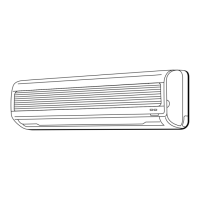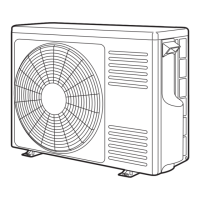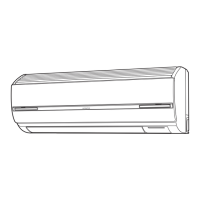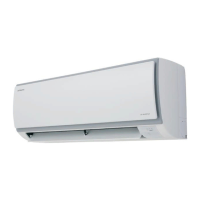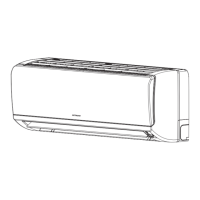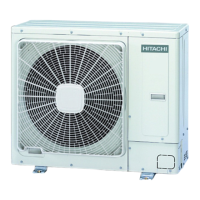– 60 –
DC current
Drive
signal
(AX-8J01)
Ip signal
Chopper signal
Reset signal
Reset voltage
DC current level
DC current
Voltage amp. circuit
Detection
resistor
R24
12V
DC260V
-360V
Reset circuit
Peak current cut off
circuit
Trip signal synthesis
circuit
Chopper signal
Photocoupler
Outdoor micro computer
Compressor
motor
Power
module
Fig. 8-2
● The following describes the operations of each circuit in detail.
(1) Peak current cut off circuit
Fig.8-3 Peak Current Cut off Circuit and Waveforms at Each Section.
6
5
4
8
7
DC current Id
Voltage at point
Power Module
Negative
Terminal
0.75V
15A
Micro computer
Voltage at pin
29
Voltage at point
A
A
C
DC current
Detection
resistor
To lower arm
drive circuit
R24
R541
C515
C314
R320
C0M2
C318 R317
Q302
R314
Q301
R313
R311
Q308
Outdoor
micro
computer
Reset
signal
R312
R506
Z0501
C311
R315
D301
D302
R316
Q303
R319
R318
R321
D303
R542
R322
R323
Q305
C313
0V
0V
0V
0V
0V
0V
0V
0V
5V
5V
5V
12V
5V
5V
35
11
29
36
38
B
C
71
POR
Ip
8J–HIC
Fig.8-3 Peak Current Cut off Circuit and Waveforms at Each Section
● The Ip cut off circuit detects an instantaneous high-level current and stops the inverter to protect components
including the power module.
● If a current exceeding 15A flows as shown in the diagram, the voltage at point A detected by the
detecation resistor is input to the positive e terminal of COM (2), and when it exceeds the voltage at the
negative d terminal which is the set value, the output pin voltage (at point B) of COM (2) goes "LO" [
"HI". This turns Q303 on and stops the power module circuit via D4 and D2; also the voltage at point C
goes "HI" [ "LO" and the Ip signal is supplied to pin
Z
of the micro computer which stops the inverter.
● On the other hand, since the voltage at the positive e terminal is pulled up by R318, it is higher than the
voltage at the negative d terminal even after the DC current becomes 0A and the voltage at point A
returns to 0V, therefore the output is temporarily kept at "Hi" (memory function).
● The micro computer sets pin
o
from "Hi" to "Lo" after the drive signal stops to release the memory function
of COM (2) and return it to the initial state.

